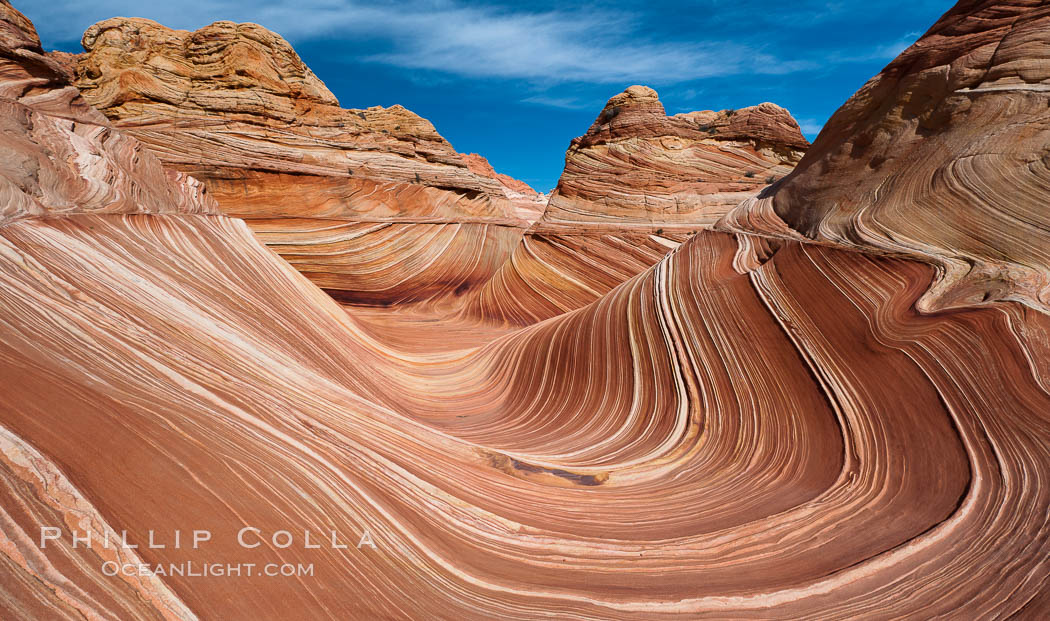Sitting on the rim of the main bowl of the Wave — right where the photograph below was taken — I watched a couple of hikers arriving. There reaction was natural: no sooner did they step foot through the entry passage than they looked around at the strange surroundings in awe. As one of them walked toward me, she turned around and suddenly said “Oh, its the Heart of the Wave!” She must have recognized the view (below) that is oft-repeated in photographs, and her name for this view must have been coined by someone before her. It seemed quite fitting to me. So thus it is, the Heart of the Wave:
The Wave, an area of fantastic eroded sandstone featuring beautiful swirls, wild colors, countless striations, and bizarre shapes set amidst the dramatic surrounding North Coyote Buttes of Arizona and Utah. The sandstone formations of the North Coyote Buttes, including the Wave, date from the Jurassic period. Managed by the Bureau of Land Management, the Wave is located in the Paria Canyon-Vermilion Cliffs Wilderness and is accessible on foot by permit only.
Image ID: 20625
Location: North Coyote Buttes, Paria Canyon-Vermilion Cliffs Wilderness, Arizona, USA
What process produced this geologic oddity? Diagenic coloration arising from stratigraphic relationships among the sandstone layers. Navaho sandstone, almost 200 million years old, was formed from what were formerly sand dunes, compressed and hardened into their current stony form. The colorations stems from iron oxides (think rust!) such as goethite and hematite, with colors ranging from oranges and yellows to salmon, reds and purples.




